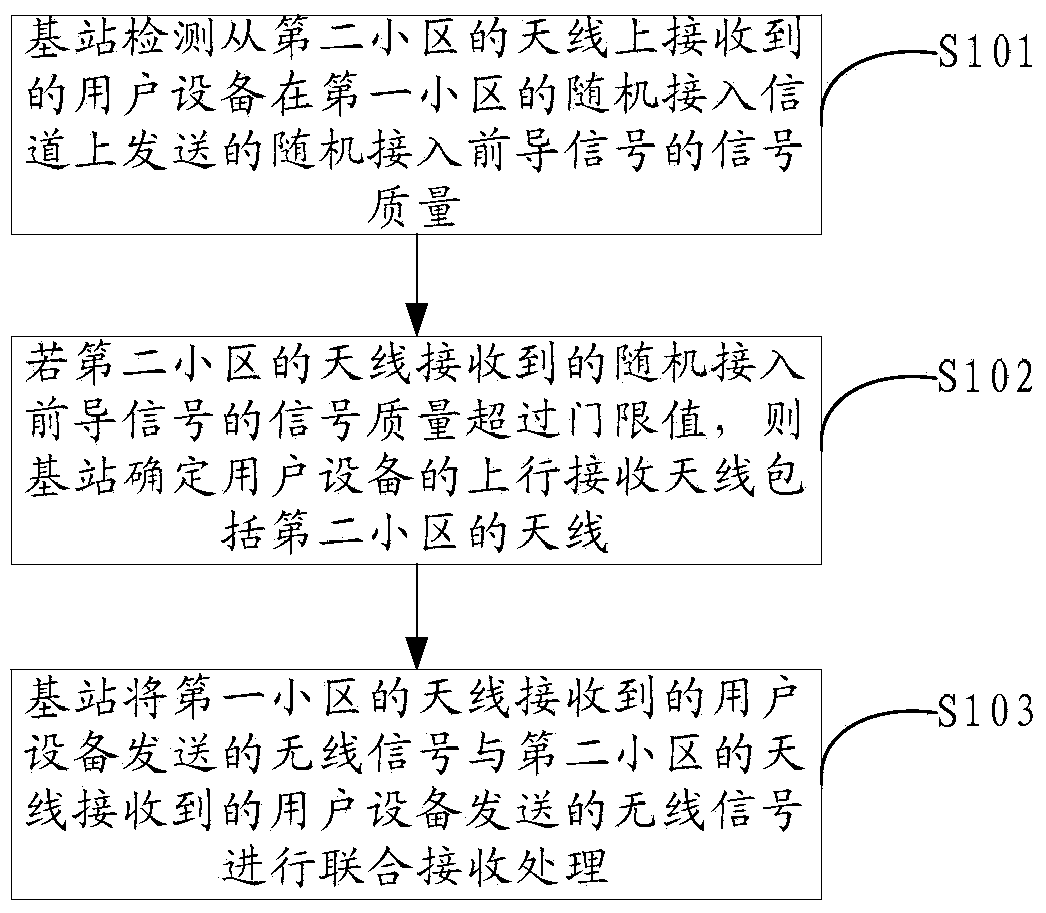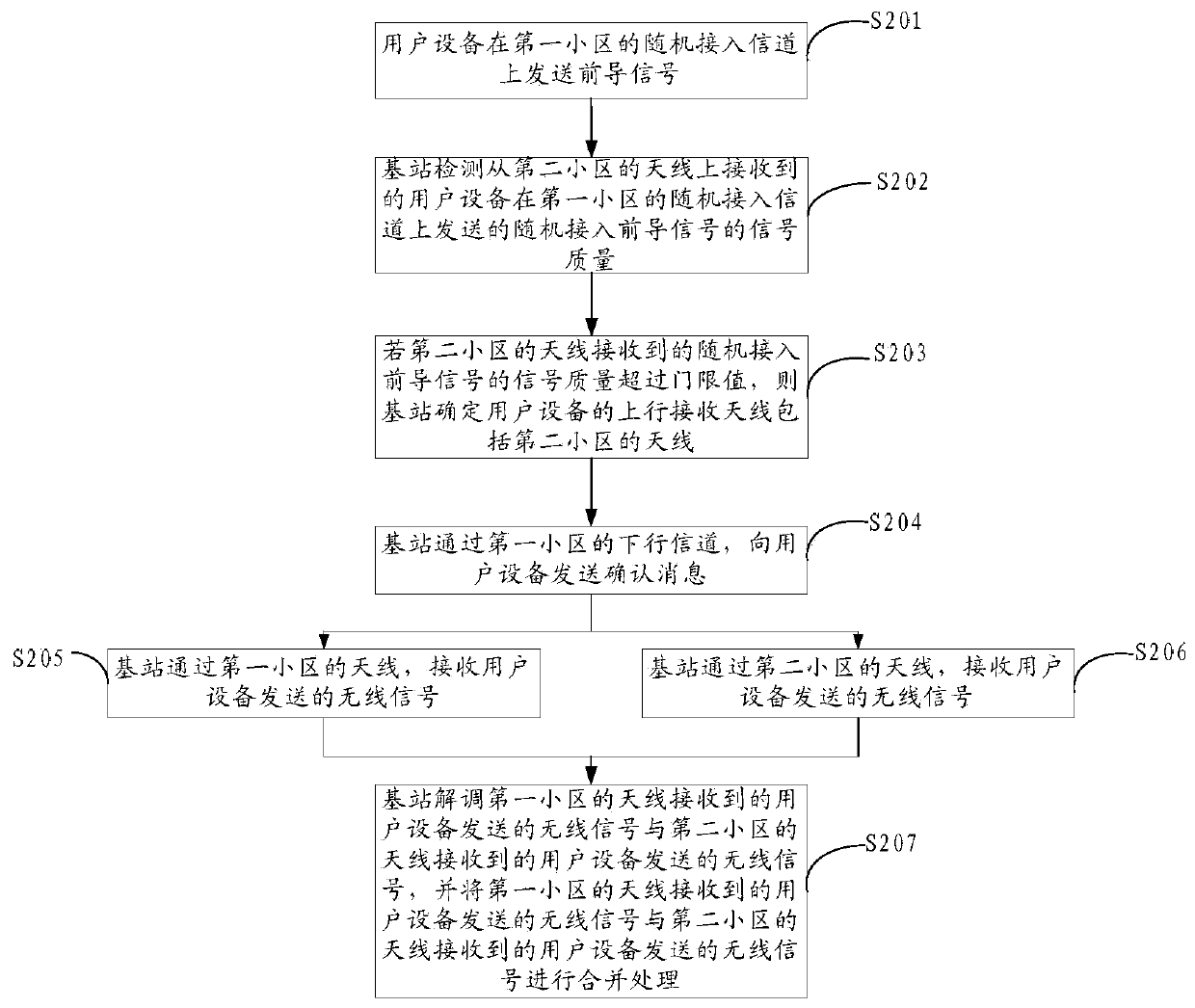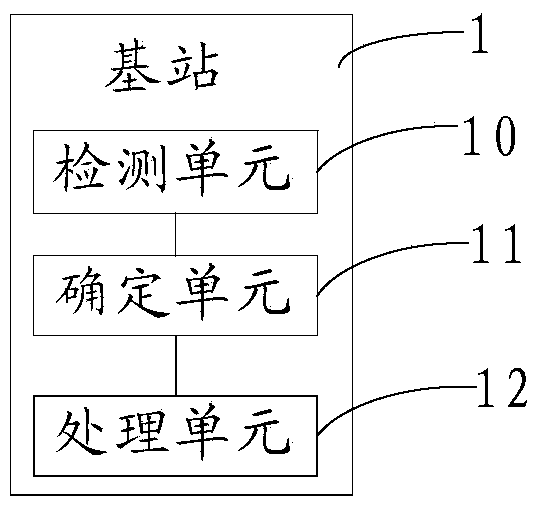Method and device for determining reception antenna
A technology for receiving antennas and antennas, which is used in connection management, wireless communication, radio transmission systems, etc. to enhance reliability and reduce system interference.
- Summary
- Abstract
- Description
- Claims
- Application Information
AI Technical Summary
Problems solved by technology
Method used
Image
Examples
Embodiment 1
[0056] An embodiment of the present invention provides a method for determining a receiving antenna, such as figure 1 shown, including:
[0057] S101. The base station detects the signal quality of the random access preamble signal sent by the user equipment on the random access channel of the first cell received from the antenna of the second cell.
[0058] Wherein, the second cell is an adjacent cell of the first cell, and the first cell may be a cell where the user equipment in the idle state resides, or a serving cell for the user equipment in the public channel state.
[0059] When the user equipment in the idle mode selects a suitable cell to camp on, or the user equipment in the common channel state is in the serving cell, an initial random access process will be initiated. Random access is a basic function, and the user equipment can perform uplink transmission only after successfully applying for the transmission permission of the uplink random access channel through...
Embodiment 2
[0079] An embodiment of the present invention provides a method for determining a receiving antenna, such as figure 2 shown, including:
[0080] S201. The user equipment sends a preamble signal on a random access channel of the first cell.
[0081] Wherein, the first cell may be a camping cell of the user equipment in an idle state, or may be a serving cell of the user equipment in a public channel state.
[0082] When the user equipment in the idle mode selects a suitable cell to camp on, or the user equipment in the common channel state is in the serving cell, an initial random access process will be initiated. Random access is a basic function, and the user equipment can be scheduled by the system for uplink transmission only after it is synchronized with the uplink of the system through the random access process.
[0083] Random access is one of the most basic functions of the cellular system, which makes it possible for the terminal to establish a connection with the n...
Embodiment 3
[0124] An embodiment of the present invention provides a base station 1, such as image 3 shown, including:
[0125] The detection unit 10 is configured to detect the signal quality of the random access preamble signal sent by the user equipment on the random access channel of the first cell received from the antenna of the second cell, the second cell being the first cell Neighboring districts of the district;
[0126] A determining unit 11, configured to determine that the uplink receiving antenna of the user equipment includes the antenna of the second cell if the signal quality of the random access preamble signal received by the antenna of the second cell exceeds a threshold value ;
[0127] The processing unit 12 is configured to perform joint reception processing on the radio signal sent by the user equipment received by the antenna of the first cell and the radio signal sent by the user equipment received by the antenna of the second cell.
[0128] Further, as Fig...
PUM
 Login to View More
Login to View More Abstract
Description
Claims
Application Information
 Login to View More
Login to View More - R&D
- Intellectual Property
- Life Sciences
- Materials
- Tech Scout
- Unparalleled Data Quality
- Higher Quality Content
- 60% Fewer Hallucinations
Browse by: Latest US Patents, China's latest patents, Technical Efficacy Thesaurus, Application Domain, Technology Topic, Popular Technical Reports.
© 2025 PatSnap. All rights reserved.Legal|Privacy policy|Modern Slavery Act Transparency Statement|Sitemap|About US| Contact US: help@patsnap.com



